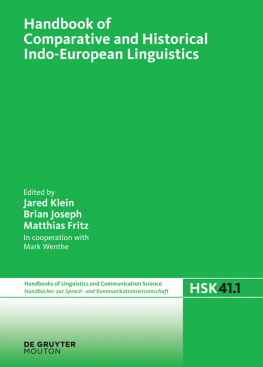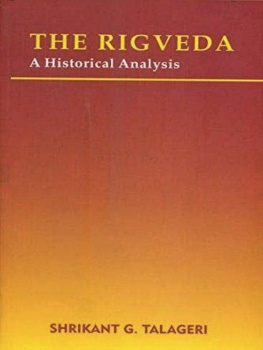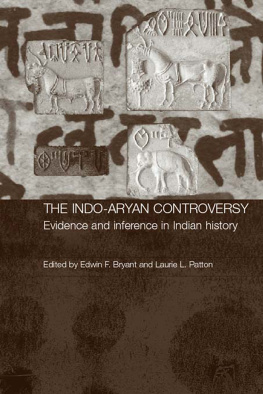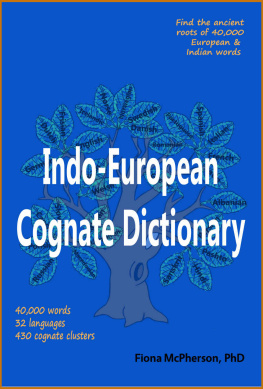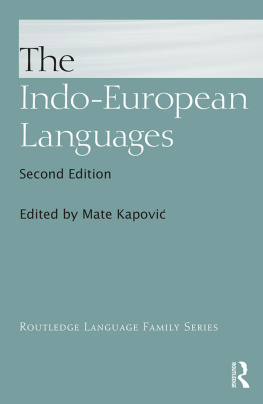Tracing the Indo-Europeans
New evidence from archaeology and historical linguistics
Edited by
Birgit Anette Olsen Thomas Olander
and
Kristian Kristiansen
Published in the United Kingdom in 2019 by
OXBOW BOOKS
The Old Music Hall, 106-108 Cowley Road, Oxford, OX4 1JE
and in the United States by
OXBOW BOOKS
1950 Lawrence Road, Havertown, PA 19083
Oxbow Books and the individual contributors 2019
Paperback Edition: ISBN 978-1-78925-270-5
Digital Edition: ISBN 978-1-78925-271-2
Kindle Edition: ISBN 978-1-78925-272-9
A CIP record for this book is available from the British Library
Library of Congress Control Number: 2019942443
All rights reserved. No part of this book may be reproduced or transmitted in any form or by any means, electronic or mechanical including photocopying, recording or by any information storage and retrieval system, without permission from the publisher in writing.
For a complete list of Oxbow titles, please contact:
| UNITED KINGDOM | UNITED STATES OF AMERICA |
| Oxbow Books | Oxbow Books |
| Telephone (01865) 241249 | Telephone (800) 791-9354, Fax (610) 853-9146 |
| Email: | Email: |
| www.oxbowbooks.com | www.casemateacademic.com/oxbow |
Oxbow Books is part of the Casemate Group
Front cover: The kneeling figurine from Frdal. Photo: National Museum of Denmark. CC BY-SA 2.0.
Contents
List of figures
Figure 2.1 The Indo-European language family.
Figure 2.2 The spread of farming in Europe.
Figure 2.3 Srednij Stog, Jamnaja, Afanasevo, Corded Ware cultures.
Figure 3.1 Retention of Proto-Indo-European vocabulary by geography.
Figure 3.2 Retention of Proto-Indo-European vocabulary by age of language attestation.
Figure 3.3 Semantic field display for cattle in Early Irish.
Figure 4.1 Example of TRB pottery decorated with cord stamp impressions in the Virum style. From Kuls, Vordingborg, Zealand.
Figure 4.2 Norwegian sites with Neolithic cord stamp decorated pottery.
Figure 4.3 Cord Stamp decorated pottery from Auve, Sandefjord, South Norway.
Figure 4.4 Amber button from Auve, Sandefjord, South Norway.
Figure 4.5 F-style pottery from the SwedishNorwegian Battle Axe Culture. From Regna, stergtland, Sweden.
Figure 4.6 Cord decorated pottery from the Sredniy Stog culture in the Ukraine.
Figure 5.1 Chronological sequence of a Single Grave mound.
Figure 5.2 Chronological scheme of the Single Grave period in Jutland and Schleswig-Holstein.
Figure 5.3 Type A battle axes as defined by Glob.
Figure 5.4 Early cord-decorated beaker from Mbjerggaarde, Vejle County.
Figure 5.5 Map showing the distribution of the earliest Single Grave culture.
Figure 5.6 Layout and cross section of stone-packing grave at Vroue Hede II, Viborg County.
Figure 5.7 Map showing the distribution of stone-packing graves and Single Grave features following Funnel Beaker traditions.
Figure 5.8 The distribution of the Corded Ware (shaded area) and Yamnaya (hatched area) complexes.
Figure 6.1 Dog bones from Krasnosamarskoe.
Figure 6.2 Krasnosamarskoe site shown within the Late Bronze Age regional archaeological cultures (Srubnaya and Andronovo) of the Eurasian steppes and the Bactria-Margiana (BMAC) irrigation-supported civilisation in Central Asia, c. 20001800 cal BC.
Figure 6.3 Aerial photo showing the site of Krasnosamarskoe settlement excavations, Kurgans 13, shovel test transect, and activity area excavations (Area Y).
Figure 6.4 Plan and section of Krasnosamarskoe IV Kurgan 3.
Figure 6.5 Plan of settlement site showing location and number of pit features, whole vessels and small metal finds.
Figure 6.6 Dolon wearing a wolf-skin to spy on the Greeks, from the Iliad. Detail from an Attic red-figure lekythos, c . 460 BC.
Figure 6.7 Stone stele associated with steppe burials and found in Bulgaria, Turkey, France and Ukraine have many common characteristics.
Figure 6.8 Imagery possibly depicting youthful warrior groups found on petroglyphs.
Figure 7.1 Pashupati (Lord of Animals) seal from Mohenjo-Daro interpreted as a representation of a yogi or proto-Shiva.
Figure 7.2 Figurine from Grevensvnge.
Figure 7.3 The kneeling figurine from Frdal.
Figure 7.4 Male twins and female figurine from Grevensvnge, as drawn c . 1780 by Christian Brandt.
Figure 7.5 A horned figure on the Gundestrup cauldron (interior plate A) in half-lotus and holding a snake.
Figure 8.1 Cross-cousin marriage according to Benveniste (1969).
Figure 8.2 Grandfather-grandson and uncle-nephew-relationship according to Olsen (forthcoming).
Figure 9.1 The Kurgan 1 at Ulskaya.
Figure 9.2 Plan drawing of Tomb V at Monte Michele, Veii. Figure 9.3 The heroon at Lefkandi.
Figure 9.4 Salamis Tomb 47.
Figure 9.5 Tomb 789, Royal Cemetery of Ur.
Figure 9.6 Gordion, tumulus KY. Plan drawing of the pit containing remains of the burial chamber and the horse burial.
Figure 9.7 Ivory inlay from one of the stools found in the dromos of Slamis Tomb 79.
Figure 9.8 Ivory work from Fort Shalmaneser, Nimrud, ninth to eighth century BC.
Figure 9.9 The king in his war chariot partaking in a procession. Relief from Nimrud, c . 730727 BC.
Figure 9.10 Sketch drawing of the hunting chariot from Salamis Tomb 3.
List of tables
Table 2.1 The Indo-European language branches with representative languages.
Table 2.2 Germanic vocalism.
Table 2.3 Proto-Indo-European *h uh nah .
Table 2.4 Proto-Indo-Tocharian *k w k w lo-.
Table 2.5 Proto-Indo-Celtic * rot(h )- .
Table 2.6 Proto-Indo-Celtic *h ks- .
Table 3.1 Contribution of cognates reconstructed to Proto-Indo-European by language group.
Table 3.2 The most widely attested items in Proto-Indo-European.
Table 3.3 The Proto-Indo-European lexicon by semantic field and average number of cognates per item in each semantic field.
Table 3.4 Proto-Indo-European strength of attestation of names of body parts compared with word frequency in American English.
Table 3.5 A comparison between the semantic fields of Proto-Indo-European and American English.
Table 3.6 The semantic fields of Proto-Indo-European by language group.
Table 3.7 Comparison of Proto-Indo-European, Uralic and Nostratic by semantic field.
Table 3.8 Chi-square values by semantic category for Proto-Indo-European, Uralic and Nostratic.
Table 3.9 Number of lexemes for each semantic item in Early Irish, ProtoCeltic and Proto-Indo-European.
Table 3.10 Most frequent concepts attested in Nostratic.
Table 6.1 Srubnaya individuals buried at Krasnosamarskoe IV, Kurgan 3, by age group.
List of contributors
Thomas Olander is Associate Professor in Comparative Indo-European Linguistics at the University of Copenhagen. He completed his PhD in 2006 and his doctoral thesis in 2015. He is interested in Indo-European Studies in a broad sense, including the linguisticsarchaeology interface.
J.P. Mallory is Emeritus Professor of Prehistoric Archaeology at Queens University Belfast. His research focuses on the interface between archaeology and Indo-European linguistics.
Einar stmo is professor (Emeritus) at the Museum of Cultural History, University of Oslo. His research has mainly been concerned with the Neolithic of Scandinavia and with Bronze Age rock art.



